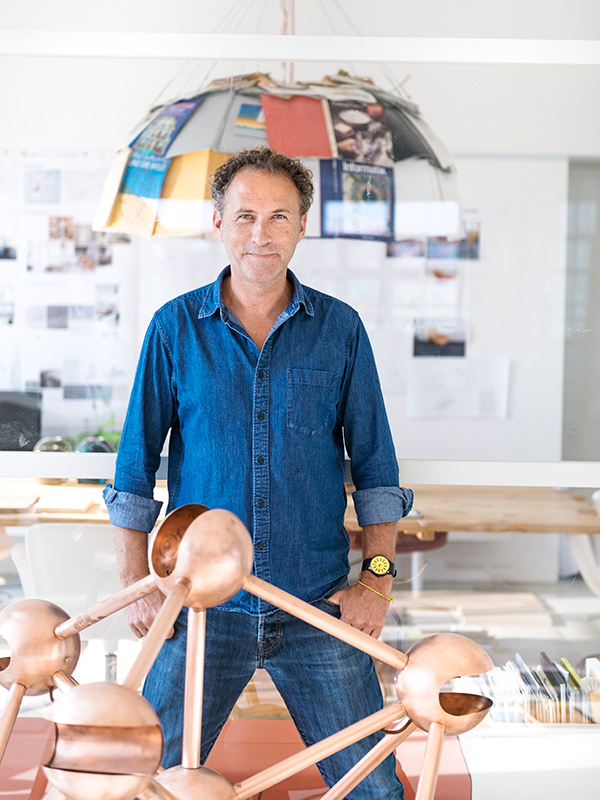Sixty Years of Architecture and Interior Design: Retrospect and Outlook With Peter Ippolito

Foto: Ippolito Fleitz Group (Jessica Morfis)
The experimental legacy of the 1960s has firmly established itself in creative minds. Where will architecture and interior design stand in another 60 years? On the occasion of Detail’s 60th anniversary, Werner Aisslinger looks back and dares a look into the future.
What is the legacy of the 1960s?
Even now the 60s still represent, above all, an attitude to life! That decade was an era of change, of experiments and alternative ways of living even before the great upheavals of 1968. The political visions and social utopias, postcolonial thinking, sexual revolution, music and pop culture associated with recreational drugs provided unique and unprecedented fertile ground, particularly for art, design, fashion and architecture. The specific intensity and creativity of the 1960s still resonates today. In my field, the incomparable constructs of groups such as superstudio or Archigram firmly established themselves in the minds of every succeeding generation of creative thinkers. It is an incredibly inspiring legacy from which we all continue to draw today.
When did you first encounter Detail?
In my time as a student of the Berlin University of the Arts, the university library’s subscription to Detail was one of our daily readings. The focus on topics in construction, the hands-on attitude that nevertheless did not give aesthetics the short end of the stick − I was always excited by those things. Even the fundamental orientation of Detail is ultimately a legacy of the 1960s …
Where do you see interior design and architecture in 60 years?
I think that 60 years from now, algorithms will have taken over the lion’s share of the generic, automatable processes in both those areas. Interior design and architecture will be measured by the carbon footprint of the employed products and materials, the design as well as the necessary constructive operations. We will turn towards renewable raw materials and regenerable sources of energy in order to maintain the balance between a global population of 12 million and the earth’s resources. That will also mean that interior design and architecture will creatively build far more on the foundations of biology and science.
Werner Aisslinger (*1964) designs for brands such as Vitra, Moroso, Dedon, Cappellini, HansGrohe, Kaldewei, Foscarini, Canon, Haier, Nomos and Wästberg. His material-oriented design objects can be seen at the MoMA, the Metropolitan Museum in New York, the Fonds National d’Art Contemporain in Paris, the Victoria and Albert Museum in London and the Vitra Design collection. His solo exhibitions, for instance Home of the Future, which took place in Berlin in 2013 and House of Wonders, which formed part of Munich’s New Collection in 2017, form an ironic symbiosis of utopia and social criticism. In 2014, Aisslinger opened his exhibition on the occasion of AW Designer of the Year in Cologne. His office, studio aisslinger, in Berlin and Singapore is increasingly active in spatial design. Apart from “experience architecture”, his studio plans coworking spaces as well as headquarters, 25hours hotels, malls for the Central Group in Asia and new-work offices for Zalando.



